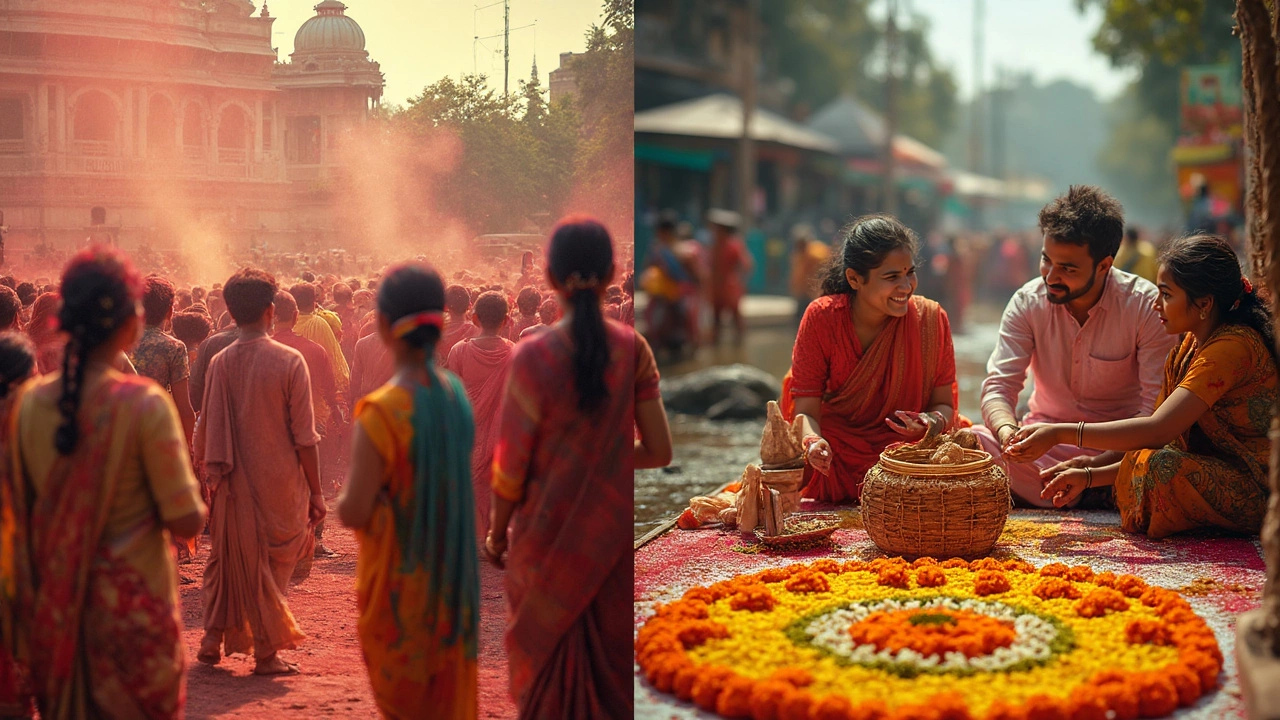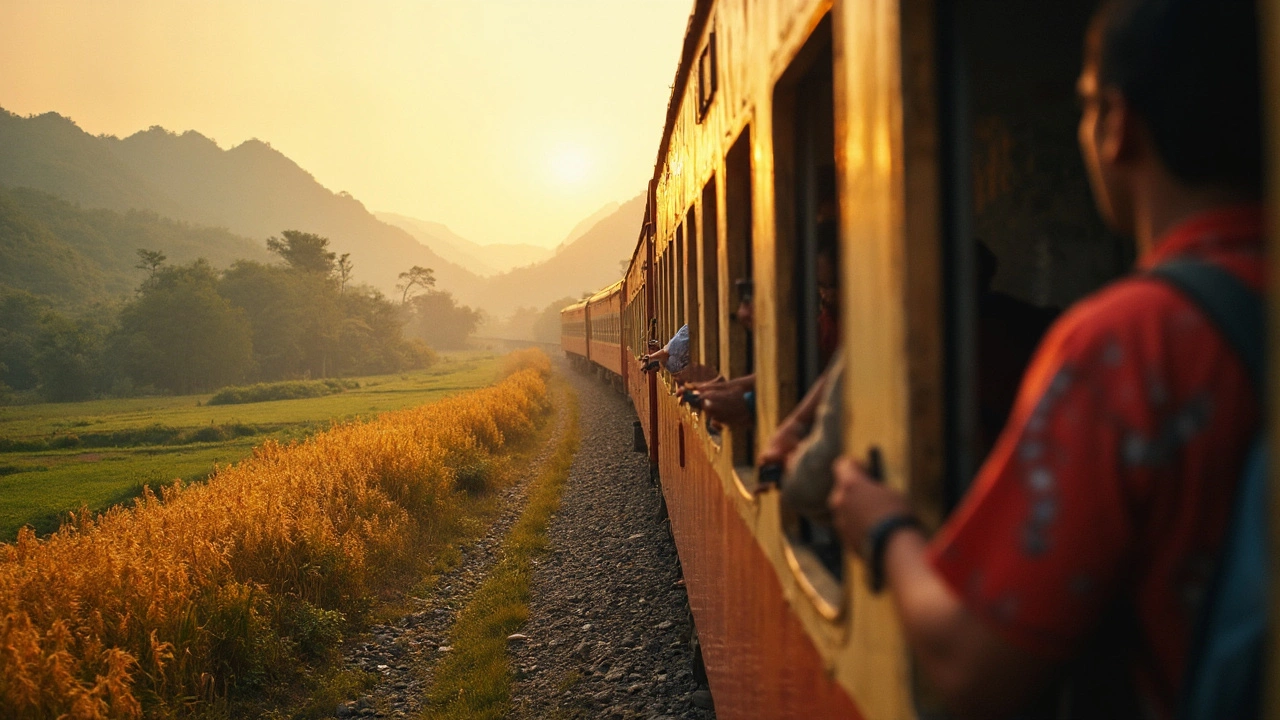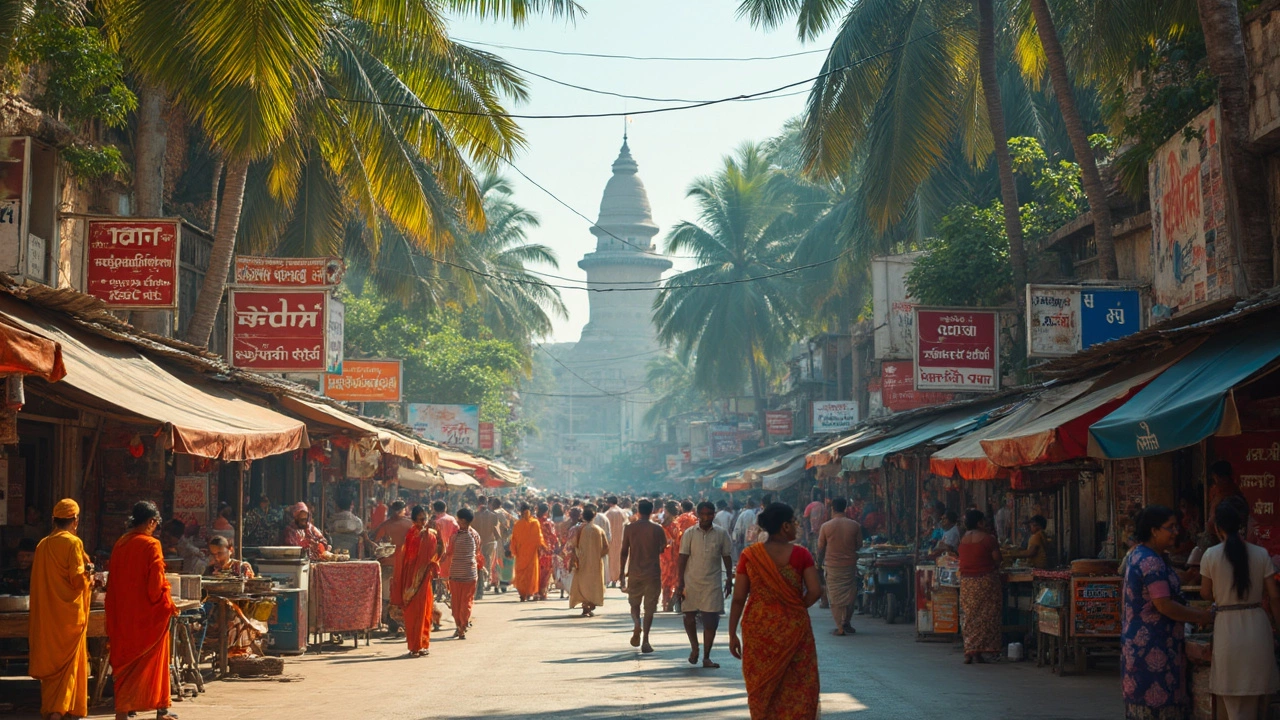Most tourists are surprised by just how different North and South India feel. It's almost like visiting two countries in one trip. Should you pack warm clothes or expect beaches? Will you eat more naan or rice? Figuring this out before you go saves a lot of confusion—and gets you into fewer awkward food orders at restaurants.
Plenty of travelers ask which region is "better." The truth? They both hit you with surprises, but in totally different ways. North India is known for its forts, bustling cities, desert landscapes, and the iconic Taj Mahal. Down south, palm trees, temple towns, and sunny beaches take over. Even the way people greet you, celebrate festivals, and get around can look worlds apart.
If you plan to explore both, expect a real switch in vibes every time you cross that invisible line—starting with what shows up on your plate, the music in the street, and the words people use to say hello. Let's get into what exactly changes from north to south, and what that means for your trip.
- Cultural Contrasts
- Food and Flavors
- Languages and Communication
- Climate and Landscapes
- Top Places to Visit
Cultural Contrasts
If you travel from North India to South India, you’ll spot differences right away—even if it’s your first trip. They don’t just look different. The way people dress, the festivals they celebrate, and even the pace of life can feel totally different. North India leans more towards big, flashy celebrations and Mughal-inspired art and architecture. Think Diwali with streets packed for fireworks, Holi with wild color fights, giant weddings, and majestic palaces in places like Rajasthan.
Move south and the vibe gets calmer but just as fascinating. The temples here look super different: more colorful carvings, sky-high gateways called gopurams, and rituals that have barely changed in centuries. Onam in Kerala and Pongal in Tamil Nadu are celebrated big-time, but you’ll find it’s more about family feasts and traditional dances than giant city parades.
- North Indian cities (like Delhi, Jaipur, Varanasi) tend to be busier and a bit noisier. The energy is always turned up to eleven.
- South Indian towns (like Mysore, Kochi, Madurai) run at a slower pace, and you’ll spot fewer honking horns and crowded markets.
- You’ll see more women in salwar kameez or sarees in the north, while in the south, cotton sarees and lungis (for men) are everywhere, especially in the heat.
- Dance and music styles split here too: think Bollywood for the north, Carnatic music and Bharatanatyam dance in the south.
If you like museums, check out the difference in art too. North Indian galleries show Mughal miniatures, while the south’s displays are packed with bronze statues of Hindu gods.
Here’s a quick look at how some of the culture shifts by region:
| Aspect | North India | South India |
|---|---|---|
| Major Festivals | Diwali, Holi, Eid | Onam, Pongal, Vishu |
| Popular Attire | Salwar Kameez, Saree, Sherwani | Cotton Saree, Lungi, Mundu |
| Architecture | Forts, Palaces, Mughal Tombs | Colorful Temples, Gopurams |
| Famous Dances | Bollywood, Kathak, Bhangra | Bharatanatyam, Kathakali, Kuchipudi |
So if cultural immersion is your thing, get ready—every region feels like its own storybook, with a new chapter on every train ride.
Food and Flavors
This is where the north-south split really hits you. In North India, wheat rules. Think fluffy naan, crispy parathas, and thick, creamy curries—especially in places like Delhi and Punjab. You’ll spot a lot of dishes with dairy, like paneer tikka and buttery dal makhani. North Indian food packs in the flavor with spices, but the heat level is often toned down compared to the south.
Head south and the menu shifts completely. Rice is everywhere: dosas (giant crispy pancakes), idlis (fluffy rice cakes), and sambar (a spicy lentil soup) are the stars here. Meals are often served on banana leaves, more so in Tamil Nadu and Kerala, which adds to the whole local feel. Coconut, tamarind, curry leaves, and mustard seeds show up in almost every recipe. Expect your tongue to tingle—south Indian food usually has a bit more kick!
Street food is another thing you can’t skip. North India rolls out chaat (try it in Agra or Delhi), samosas, and sweet jalebis. In the south, grab a plate of piping hot vada or spicy Andhra biryani. Want a quick tip? When in doubt, look for a busy stall. Locals know best, and the crowd is usually a good sign of freshness and flavor.
Both regions are friendly for vegetarians, but if you’re after meat, the north is big on tandoori chicken and kebabs, while the south goes for fiery Chettinad chicken or seafood, especially down the Kerala coast. The North India region offers lassi (a yogurt drink) to cool you down after a spicy meal, but in the south, you’ve got filter coffee to keep you going in the tropical afternoon heat.
Don’t forget: wherever you eat, be ready for flavors you might not expect. Some folks find South Indian food a little tangy and bold at first, while the richness of North Indian gravies can surprise you. That’s part of the fun—try everything once, and see which side of the flavor divide you end up loving.

Languages and Communication
One of the big shocks for any traveler is just how many languages people speak across India. There’s no single Indian language. Instead, each region—and even each state—has its own favorites, and nowhere is this split more obvious than between the north and the south.
In North India, Hindi is the go-to language for most daily conversations, especially in cities like Delhi, Agra, and Jaipur. English runs as a backup in hotels, airports, and big tourist spots. You’ll also hear Punjabi, Urdu, and a mix of regional dialects in smaller towns. Menus and signs usually appear in both Hindi and English, so getting around and ordering food isn’t too tough if you know a few key words.
South India is a different scene. Here, people speak Dravidian languages like Tamil, Telugu, Kannada, and Malayalam, each one pretty different from Hindi. In cities, you might find locals switching to English or even a bit of Hindi for outsiders, but in rural areas, English is the lifesaver for most travelers. Watching the way signs jump from Tamil script to English makes it clear you’ve left the north behind.
If you’re worried about getting lost in translation, here’s what helps:
- Pick up a phrase or two in Hindi for the north and try “Vanakkam” or “Namaskaram” as a hello in the south. Locals love it when you try, even if you sound funny.
- Use Google Translate or translation apps—these work surprisingly well for signs, menus, and basic longer chats.
- Most young people in cities know some English and will help you out. In smaller villages, people might be shy but are usually eager to try.
Here’s a snapshot of common languages you’ll run into, by region:
| Region | Main Languages | Scripts Used | English Use |
|---|---|---|---|
| North India | Hindi, Punjabi, Urdu | Devanagari, Gurmukhi, Perso-Arabic | Widespread in cities/tourism |
| South India | Tamil, Telugu, Kannada, Malayalam | Unique script for each language | Common in cities, less in villages |
Transport apps and hotel booking sites almost always have English options, making planning easier. Still, if you’re serious about connecting with people, learning basics like “thank you,” “how much?” or “where is...?” makes a world of difference.
Climate and Landscapes
Here’s where things get obvious fast: North India and South India almost feel like they're on different planets when it comes to weather and views.
North India has hot summers, sometimes over 45°C (that’s 113°F!) in places like Delhi, Jaipur, and Agra. Come winter, the Himalayas in the north get thick snow—places like Manali or Shimla turn into proper white Christmas towns, while the plains (like Varanasi and Amritsar) can get chilly at night. You’ll also find dry deserts in Rajasthan and green hills in Uttarakhand or Himachal Pradesh. The best time for tourists is October to March when the weather is cool and dry.
Now move to the south—think tropics all the way. South India is known for humid beaches, rolling hills, and a big monsoon season. States like Kerala and Tamil Nadu are all about coconut trees, backwaters, and Western Ghats mountains covered in tea plantations. Temperatures usually hover between 25°C and 35°C all year, but the humidity can make it feel warmer. Monsoon hits hard here between June and September—with some areas getting over 3000mm of rain in just a few months. It keeps everything super green but can mess up your travel plans with road closures or soggy shoes.
Here’s a quick breakdown of what to expect:
| Region | Main Features | Best Season |
|---|---|---|
| North India | Mountains, deserts, historic plains | October to March |
| South India | Beaches, rainforests, tropical hills | November to February |
If you’re picking where to go based on weather: Like cool air, mountain hikes, and maybe even some snow? North India is your bet. Prefer tropical beaches or want to see rice paddies and waterfalls? South is for you. No matter where you go, pack for changes—layer up in the north and bring a good raincoat for the south during monsoon.

Top Places to Visit
Anyone heading to India quickly finds out that the “must-see” lists look very different in the north and south. Each region has its own stars, and to be real, you won’t want to skip them.
In North India, the list starts with the Taj Mahal in Agra. It’s India’s biggest travel draw for a reason—sunrise photos here are totally worth the early wake-up. Delhi, the capital, has everything from the massive Red Fort to spicy street snacks in old Chandni Chowk. Jaipur is famous for its pink buildings and the Hawa Mahal (it’s got over 900 windows). Rajasthan also brings you Udaipur’s lakes and Jodhpur’s blue streets. If you want mountain action, head north to Himachal Pradesh—Shimla for toy train rides, Manali for river rafting, and Dharamshala for Tibetan vibes and a dash of snow if you’re lucky. Varanasi’s ghats might stay in your memory the longest, though. Watching sunrise on the Ganges feels almost out of this world.
South India serves up a different mood altogether. Kerala is the crowd favorite, thanks to its backwaters—floating along in a houseboat in Alleppey is honestly just as relaxing as people say. Munnar, also in Kerala, has rolling tea plantations and the freshest air. Tamil Nadu’s highlight is Madurai’s Meenakshi Temple, loaded with color, carvings, and non-stop temple action. Don’t forget Mahabalipuram’s cool rock-cut temples right by the beach. Karnataka brings Hampi’s boulder-strewn landscapes (this is Indian history with a side of wild, Instagrammable ruins) and Mysore’s grand palaces. And if a big city’s your thing, Bengaluru mixes up tech, coffee, and nightlife in a pretty unique way.
- North: Taj Mahal, Jaipur, Udaipur, Delhi, Varanasi, Shimla/Manali/Dharamshala (mountain towns)
- South: Kerala backwaters, Munnar, Madurai, Mahabalipuram, Hampi, Mysore, Bengaluru
Tip: Trains connect most major cities, but booking tickets early (especially on popular routes like Delhi-Agra or Kochi-Alleppey) will save you stress. Don’t undervalue smaller stops—you might end up finding better food and chill vibes in less touristy places than the big headlines.
